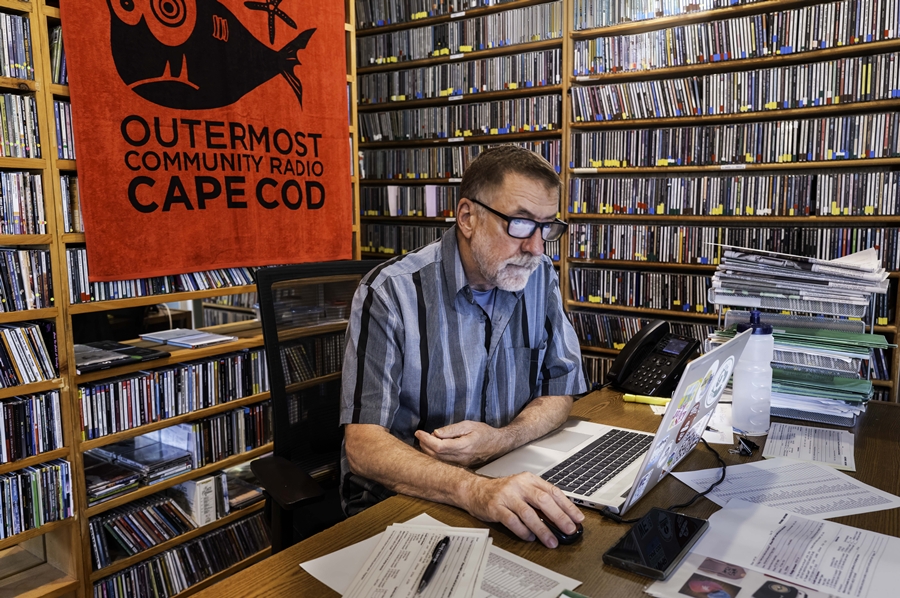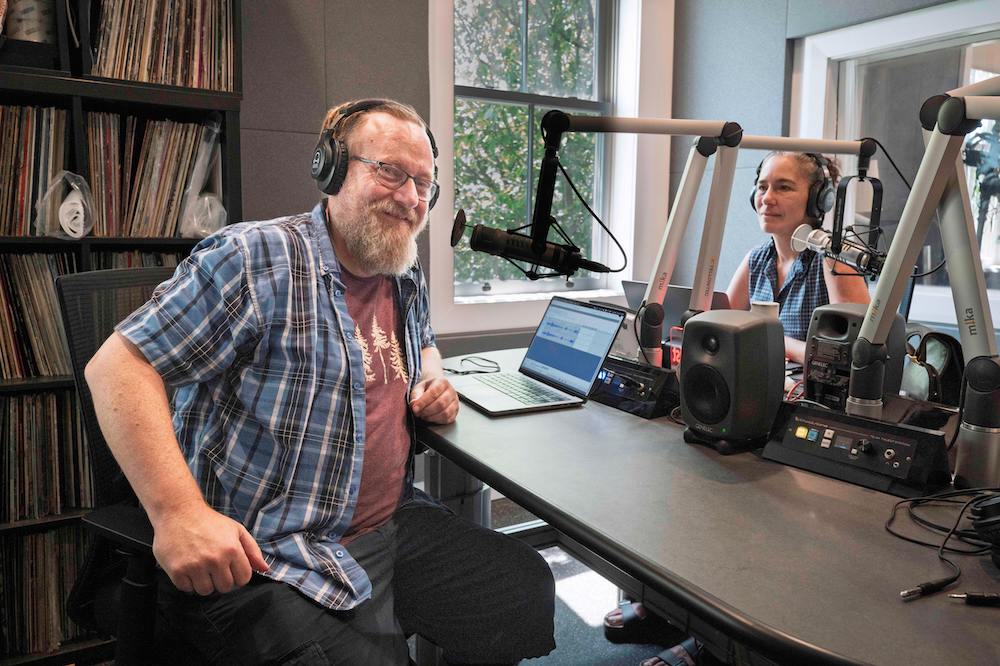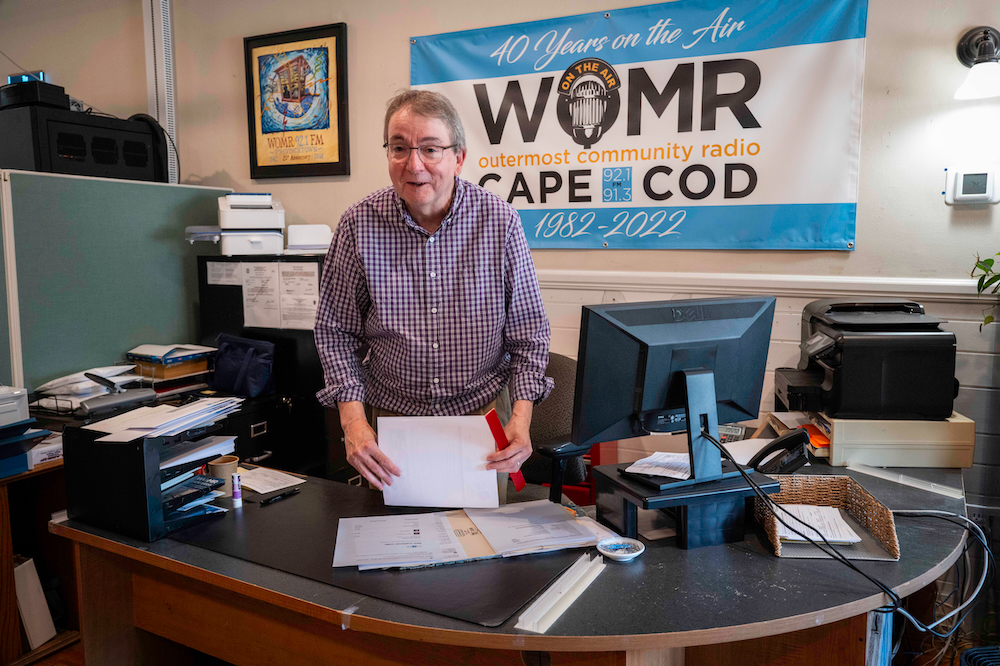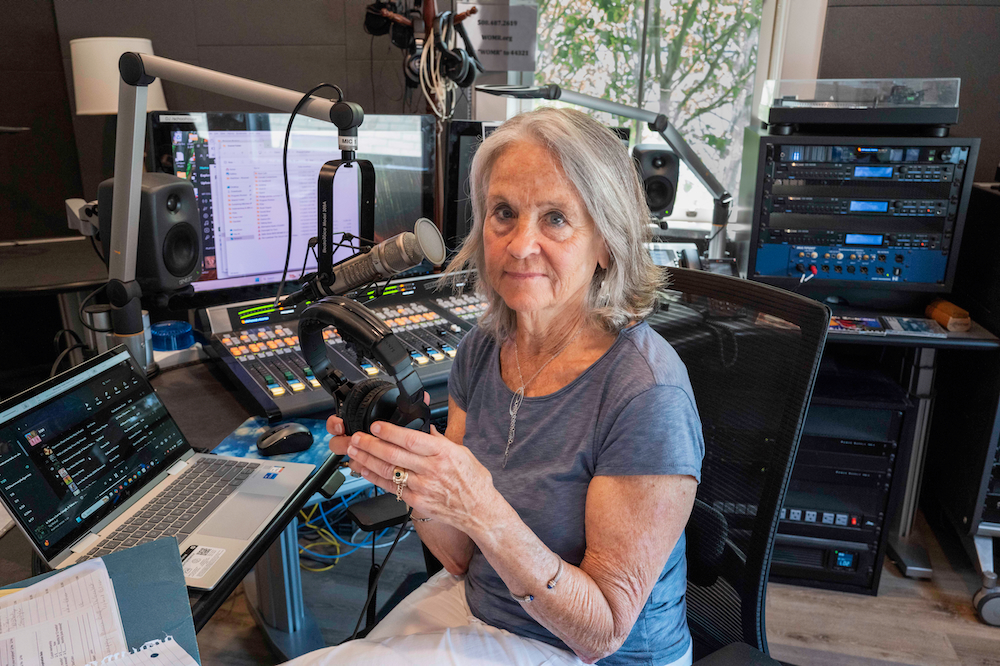PROVINCETOWN — WOMR, the Outer Cape’s community radio station, is set to lose almost 20 percent of its annual revenue following the elimination of federal funding for the Corporation for Public Broadcasting (CPB).

The station, which relies heavily on volunteer DJs to produce shows on niche music and local events, has an annual budget of around $660,000. Roughly $120,000 of that comes from the CPB — a significant sum that WOMR won’t see this year, Executive Director John Braden told the Independent.
“It’s like losing a limb,” Braden said in a July 26 interview. “We’ve been talking about, ‘OK, what do we cut? How do we raise? How can we do this?’
“I even played out scenarios where I could retire early and give some of my responsibilities to the other staff members,” he added.
Publicly funded news outlets and cultural institutions have become a target for President Donald Trump’s administration in recent months. In April, Trump asked officials to eliminate funding earmarked for the CPB, a nonprofit created by Congress that relies primarily on federal funding to support more than 1,500 local public radio and television stations nationwide.

And last week, Trump signed a bill doing just that, canceling more than $1 billion in previously allocated funding for the CPB, about two years’ worth of the organization’s funding.
Braden said no one at the Provincetown station was surprised when they learned about the funding loss. “We’ve been talking about this for months, basically because the Trump administration started talking about it months ago,” he said.
Matthew Dunn, WOMR’s operations manager, said the station typically uses the money from the CPB to cover operating costs, with staffing being the largest expense. Paying the station’s three full-time salaried employees and one part-time contractor accounts for nearly half of the station’s annual budget, he said.
The remaining funds, Dunn said, are largely used to cover infrastructure costs — including building repairs at the station’s headquarters at 494 Commercial St. and electricity bills — and production-related expenses, such as membership dues to radio networks that provide access to externally produced programs.
“If you have to cut costs, the only real cost is to cut staff, because obviously you can’t get rid of the transmitter — that’s essential to the business,” Dunn said. “It’s really stressful to think about — people losing their jobs all over the country.”

For now, both Braden and Dunn said, they’re optimistic. They think WOMR can avoid having to make tough staffing decisions thanks to an outpouring of community support for the station.
“The listeners will step up,” Braden said. “People don’t like it when you defund their favorite radio station. We started our drive on Friday, and we’ve gotten a lot of calls from people who are pretty upset about the funding cuts.”
In the five days after the cuts were announced on July 24, Dunn said, WOMR had raised about $45,000 toward its $125,000 goal.
And Dunn said the station is working to boost its long-term financial sustainability by pursuing alternative sources of funding, including private and state-level grants, to keep WOMR viable well beyond the “crisis of today.”
But even with some short-term relief from current fundraising efforts, Dunn said, he remains concerned about the station’s future stability.

“We’re part of these national, loosely associated networks of other independent radio stations,” Dunn said. “Some of them are going to go out of business, and a lot of independent producers that we get content from are not going to be able to support their work.”
Almost 20 percent of WOMR’s programming is syndicated, he said, meaning it is produced by third parties before being licensed to the station. And though WOMR leaders are optimistic about their station’s future, their colleagues at many other local radio stations that produce syndicated programs are not.
“And not only that,” he added, “the infrastructure that we rely on to distribute that content — the websites, the aggregators, the hosts that help distribute that content — may not be as strong in the future.”



